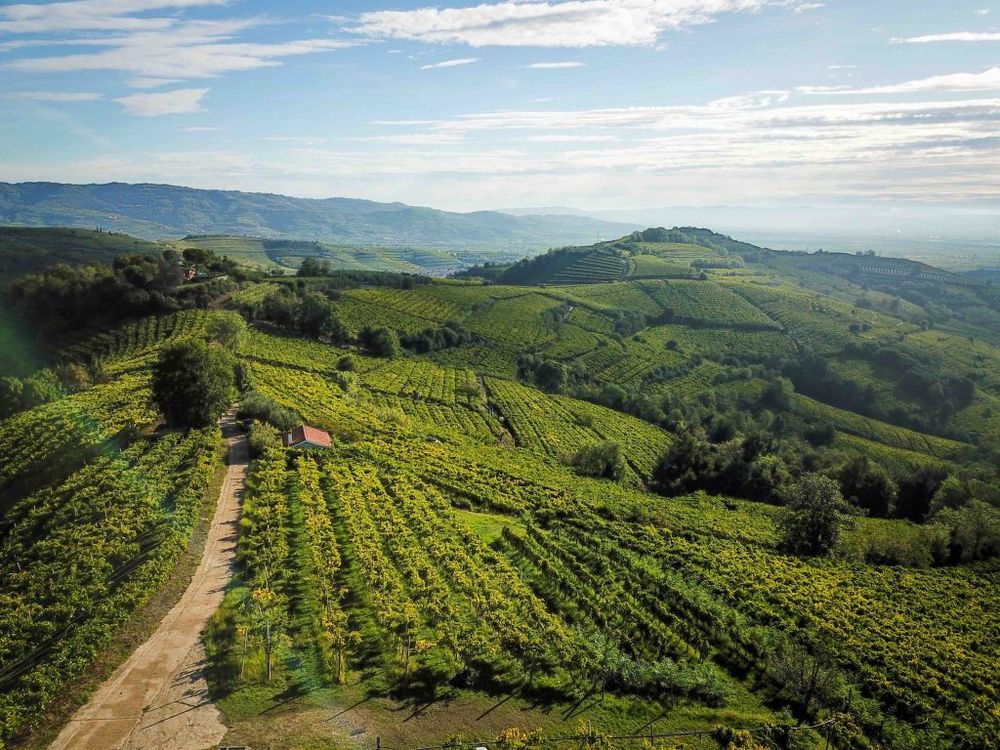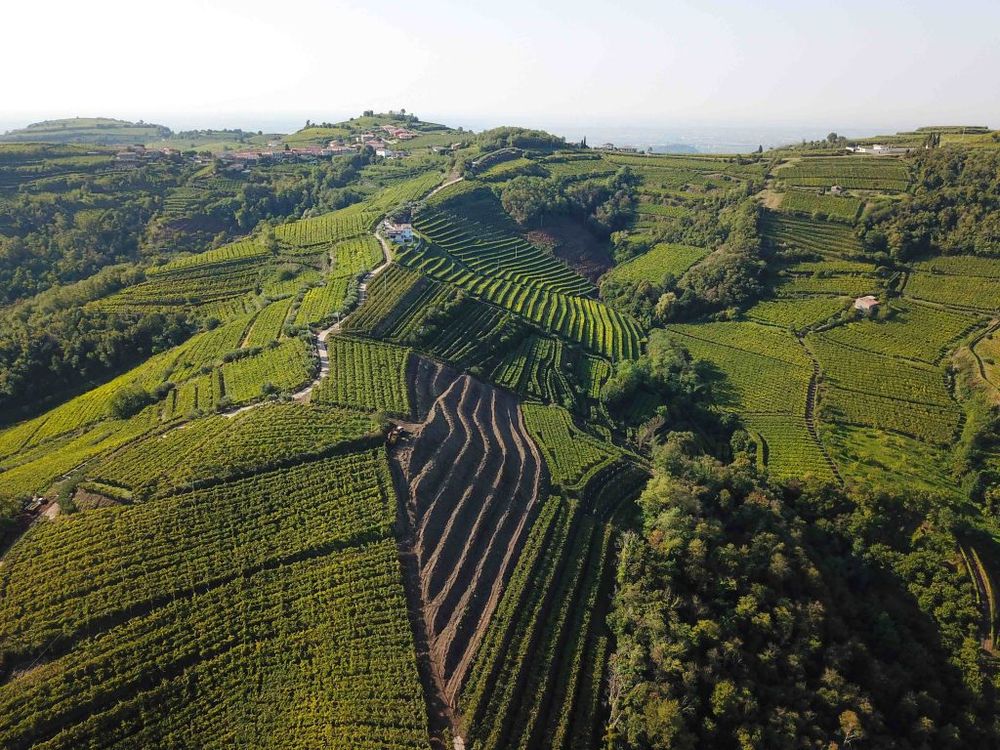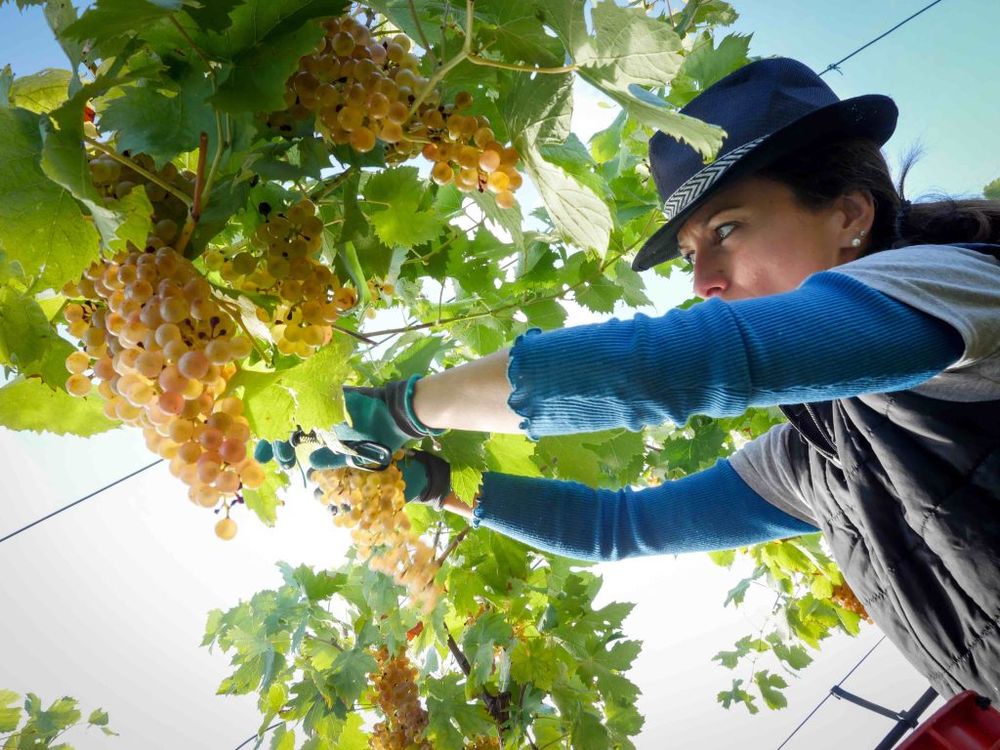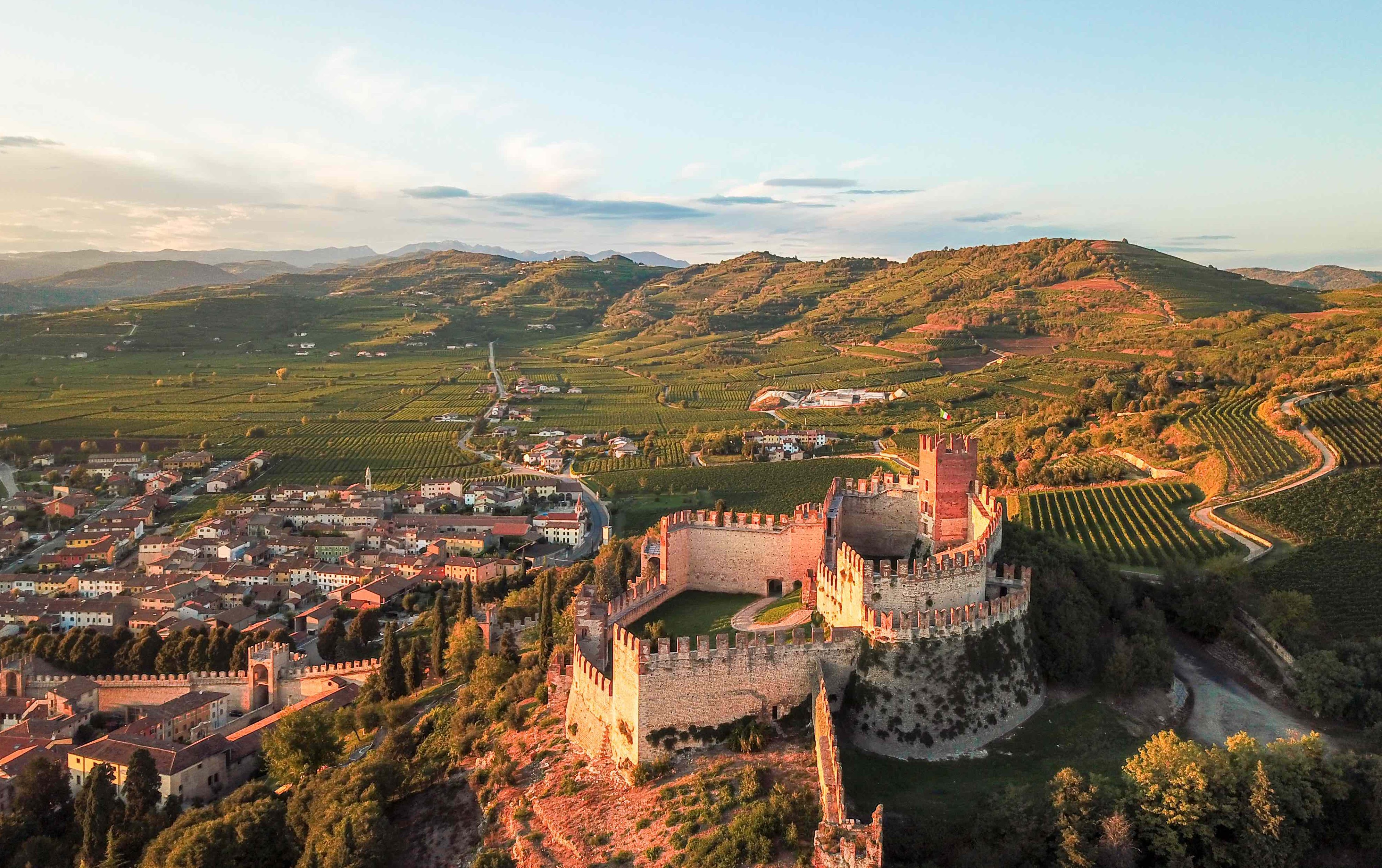The UK remains Soave’s second biggest market so buyers and producers alike will be pleased to hear the 2018 harvest is back to normal with good availability of quality wines, says Aldo Lorenzoni of Consorzio di Soave (pictures by Fabien Lainé).
What has the 2018 harvest been like – what is production compared to 2017?
The 2018 season had its challenges, but for conscientious growers the results are very good. 2017 was even more difficult because of extreme weather, from frosts to drought, that drastically reduced yields. 2017 put pressure on stocks, but 2018 yields are back to normal.
We are seeing some beautifully ripe, textured Garganega, and lively, aromoatic Trebbiano di Soave. It is early days, but we think we should have an expressive but beautifully balanced vintage that promises well for ageing. We are very excited about the potential quality of 2018.
How was the growing period?
2018 has been a challenging year with alternating bouts of heat and rain. But our native and most-planted grape, Garganega, has a very long growing season and is late ripening, and so coped well with the warmer weather. Trebbiano di Soave will be important, as usual actually, for freshness and higher aromatics in Soave.

The conditions were much better in 2018, but far from perfect.
What impact will it have on pricing?
In the short to medium term, stocks and yields have fallen slightly, and the price for grapes and wine have increased. But this is also part of Soave’s steady re-focus on quality. The market no longer ‘expects’ Soave to be a simple, cheap wine. We are still proud of our value for money, but this is now in the context of quality.
Are vintages and growing conditions getting hotter?
We are definitely feeling the effects of climate change here in Soave. The temperatures are rising and we have more unpredictable weather during the growing season. Following the famously hot year of 2003, we started a research programme comparing vineyards trained to guyot with those trained to the pergola veronase. It has been the longest and most structured comparison between two training methods ever done in Italy. The overall results suggest that our best results come from veronese pergola, although of course individual sites do vary.
But our researches show that, for our terroir, the Pergola Veronese gives grapes with superior acidity and flavour compounds. Vineyards trellised in this way are harder to harvest, however.
What impact is that having and what steps are winemakers taking to protect grapes and vines?
We have the Sentinels of Soave! We have developed an ‘Advanced Management Model’, which we introduced in 2016. It includes many aspects of integrated viticulture, such as advanced monitoring and rapid response to signs of disease pressure. It provides an holistic approach to vineyard management that is concerned with all aspects of biodiversity, from bacteria and bugs to human well-being and environment. The ‘Sentinels of Soave’ is our nickname for the band of technical specialists who help the growers implement this integrated system focused on biodiversity.

Biodiversity has become a major issue for Soave producers
What steps have wineries taking in terms of biodiversity?
The Consorzio of Soave is the first region in Italy – and one of the first in the world – to work with the World Biodiversity Association (WBA) to scientifically measure the factors that contribute to biodiversity in our vineyards. For at least 100 years, Soave has been one of the most densely planted vineyard areas of the world. Vines cover pretty much every slope. Today, there’s an urgent and shared drive to manage our land in a more sustainable way, and to implement holistic approach to vineyard management, and human enterprise.
The old focus on high-intensity, high efficiency agriculture of the 1960s and 1970s has changed. Our region was the first Historic Rural Landscape in Italy to put itself to the test of biodiversity and is the first to actively promote biodiversity to its growers.
The WBA works with wineries according to a protocol which provides an annual certification if the winery continuously improves by introducing new measures – as diverse as vineyard cultivation, to using solar panels to power the winery. The important thing is consistent, constant and measurable improvement.
Why are they doing that?
It gives our producers a model to work in a more sustainable way for the future, ensuring the land is managed in an environmentally friendly way. Each winery can individually contribute to the long-term future of the region, regardless of its size and winemaking philosophy.

What impact does it have in the vineyards?
We have been running our biodiversity protocol for two years, so we don’t yet have the detailed data on composition and trends, in the way we do for the 10-year pruning and training study. But our initial, empirical, observations are that by using biodiversity (of flora, fauna, etc.) as a type of barometer, and by combining those observations with monitoring and selective treatments, we are able to reduce inputs and achieve high quality and health, despite increasing weather variability.
Plans for the future?
The UK remains the second biggest market for Soave. In communication and markets, we will simply keep showing the contemporary reality of Soave’s fine quality, nuance and terroir. Soave of the highest quality is now being sold by scores of importers, retailers and restaurants in the UK. For 2019, we have developed a range of initiatives to update the perception of our unique territory, and support the partnership between all the operators of the supply chain, form the importer, to the distributer, to the single wine shop and restaurant.
This campaign will be coordinated by a team lead by Sarah Abbott MW and will be, in addition to our program in Japan, our main focus for 2019.









































